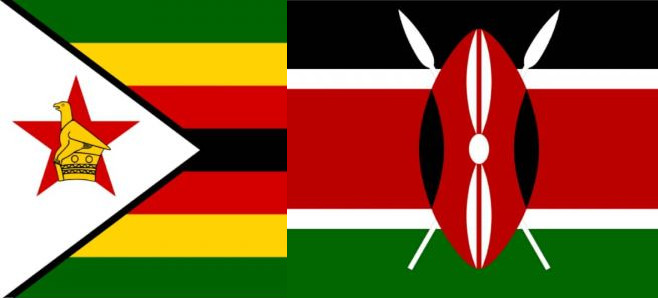No doubt Kenya is a digital powerhouse on the continent. All those stories have to count for something right? Let’s see how Zimbabwe stacks up against Kenya when it comes to internet connectivity. For this comparison we are using the respective July-September 2018 telecoms sector reports from the regulators in both countries.
Mobile penetration
As at 30 September this year, POTRAZ records a mobile penetration rate of 92% for Zimbabwe. Of course this doesn’t mean 92% of all Zimbabweans have mobile phones because a good number have more than one SIM card active. The ITU says 30% of people in developing countries have more than one SIM.
As of the same date, 30 September 2018, Kenya recorded a mobile penetration of 100%. The situation of multiple SIM cards is almost the same as in Zim. This was the first time the penetration rate crossed 100% in Kenya. In Zimbabwe we crossed 100% before (first in 2013) according to POTRAZ reports and the number has fluctuated a lot.
Fixed telephony
Zimbabwe had quite a historic advantage over Kenya when it comes to telephony services. This is made clear by the fact that the number of fixed subscriptions in Zimbabwe is more than 10 times that in Kenya even though the population of Zimbabwe is less than a third that of Kenya.
Instead of being a reason to beat our chest this should tell us how much we have messed things up in the last 3 decades. In several sectors, Zimbabwe was ahead of most countries on the continent in terms of infrastructure deployment and diversity but we got stuck in a moment or more accurately we went back in time.
The traffic handled by fixed operators is of course higher in Zimbabwe than in Kenya in absolute terms. In both countries the overall trend is that of declining fixed telephone subscriptions and traffic even though in Zimbabwe both subscriptions and traffic grew marginally from Q2 to Q3.
Where it matters: internet subscriptions
Kenya is very strong when it comes to internet connectivity. The penetration rate sits at 91% whereas in Zimbabwe it is at 55%. No wonder the internet economy is developing at a great speed in Kenya. Access to the internet is nearly ubiquitous.
The 55% Zimbabwe has is not too bad especially considering that we have had more than two decades of economic decline. The telcos in Zimbabwe especially Econet (including Liquid Telecom) have really taken a lot of risk investing in infrastructure in a country with an ever decreasing spending power and unpredictable currency regimes.
If we have achieved so much it makes one wonder where we would be right now if we had our act together all these years. We really need to get our house in order because we are not as far behind BUT we are slipping back as others progress.
Type of internet connections
The penetration rate of fibre connections is similar in Zimbabwe and Kenya at about 0.3%. As a total Zimbabwe has a higher prevalence of fixed internet subscriptions at about 1.3% and Kenya’s is at about 0.7%. This is understandable given how much Zimbabwe leads Kenya when it comes to fixed telephone subscriptions. As a result DSL internet subscriptions are approaching 100 000 when they are just above 1 000 in Kenya.
The biggest difference is in mobile data subscriptions. In Kenya 90% of all mobile subscriptions are actively subscribed to data services as well. In Zimbabwe only 59% of mobile connections are also actively subscribed for internet connectivity.
Mobile money
Mobile money is very good to compare because this is probably Africa’s most important transaction method for the digital economy. In the three months to September, Kenya had 63% of mobile subscribers using mobile money services. For the same period, POTRAZ did not report on mobile money at all. In the quarter prior however, 46% of mobile subscribers in Zimbabwe used mobile money.
Read for yourself
You can download the Zimbabwe telecoms sector report for July to September 2018 here and the Kenya telecoms sector report July-September 2018. You will notice that Safaricom is just as dominant in the Kenya market as Econet is in Zimbabwe.
The Kenya report also includes media trends. I suppose this will be the case in Zimbabwe soon when POTRAZ and the broadcasting authority merge.
The reason I conclude that Zimbabwe is punching above its weight is that we have had such economic instability over multiple decades that it is amazing that there could be comparable figures at all. This doesn’t mean we are doing OK. We have a lot of catching up to a country like Kenya.
Things have been so crazy in Zimbabwe that I avoided comparing things like revenues and mobile money transaction values because the Zimbabwe currency situation is so confused and confusing.
